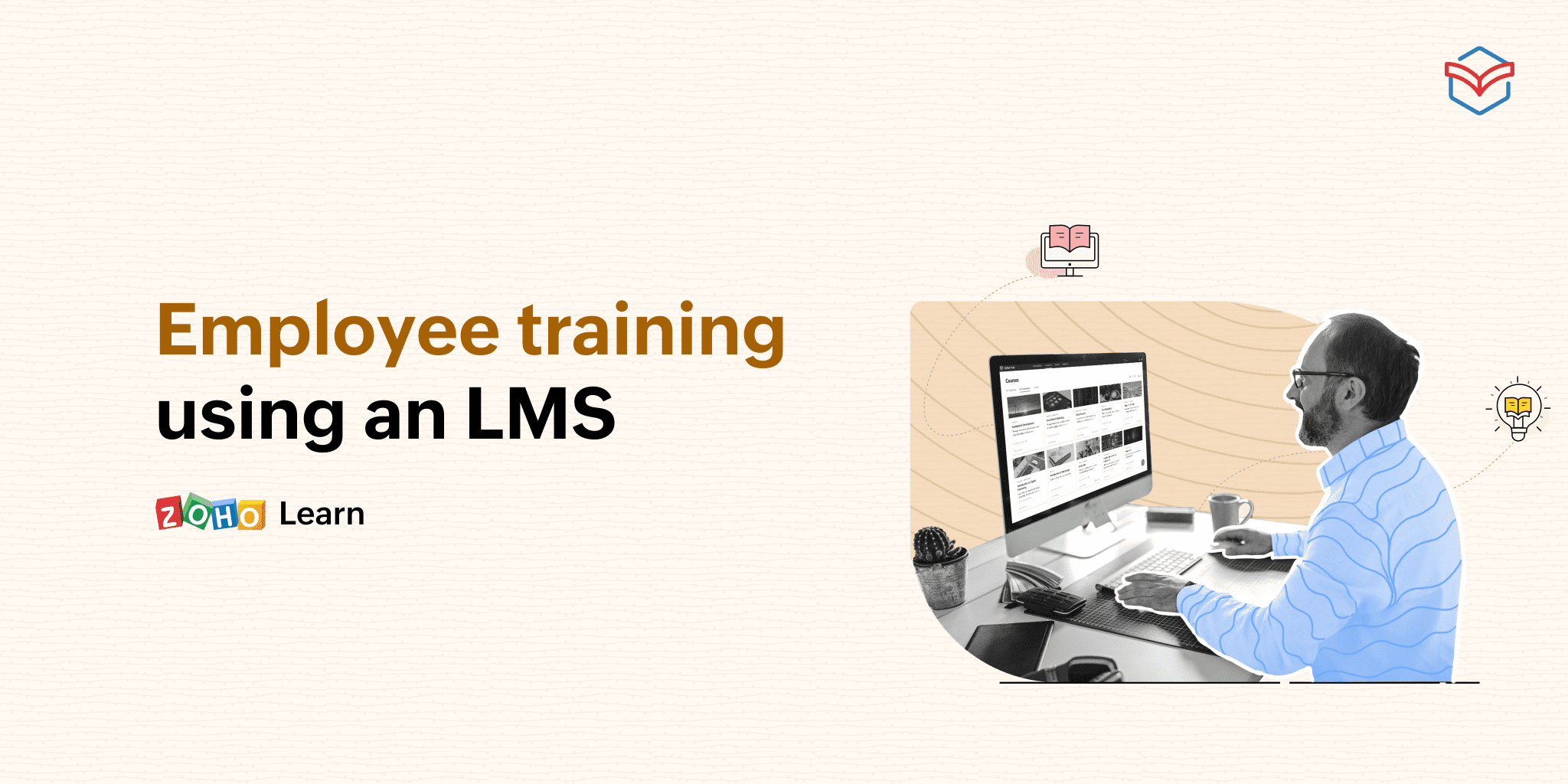Employee training using an LMS
- Last Updated : April 8, 2025
- 1.2K Views
- 4 Min Read

What is employee training?
Employee training is a standard practice for new as well as existing employees in most organizations. It helps upskill existing employees so they can stay updated with the latest technologies and trends in their industry. Employee training for new hires allows them to learn about both their new job and the organizational culture.
Employee training is a program designed to teach your employees new things or improve their existing skills and knowledge. It facilitates the performance of employees in their current roles and improves the overall productivity of the organization.
What are the common types of employee training?
Based on the organizational needs and the type of skills employees are expected to attain, employee training can be classified into the following types:
Employee onboarding is the process of introducing new hires to their new roles and company culture. It helps employees attain the skills and knowledge required to integrate with the organization and succeed in their new job.
Technical training is often designed to address a set of technical competencies. It helps employees acquire the skills they need to perform their jobs.
Soft skills training focuses on communication abilities and interpersonal skills. These skills help employees interact freely with their coworkers and also play an important role in the success and growth of the employee.
Sales training is designed for market-facing teams to help them ramp up sales and maximize profit. It focuses on topics such as selling strategies, sales pitch, buyer persona, and competitor analysis.
Compliance training is the process of educating employees about their work culture, safety measures, and legal guidelines. It ensures employee work complies with industry regulations.
Customer service training focuses on the skills required to achieve customer satisfaction. It trains employees in the skills and tools required to help customers derive more value from their company's products and services.
Leadership training is useful when an employee is promoted to a management role. It trains employees in skills like decision-making, conflict resolution, and project management.
What are the benefits of employee training?
Companies can see numerous benefits from offering employee training programs, including the following:
Improves productivity
Training enhances the skills and knowledge of employees and helps them adapt to changes in their workplace. This positively impacts the performance of employees and increases their overall productivity.
Increases employee retention
Continuous training opportunities makes employees feel valued and gives them higher job satisfaction. This encourages them to stay committed to the organization for a long period.
Reduces errors
Workplace training equips employees with the knowledge and skills they need to prevent issues and handle any situation on the job. This reduces inefficiencies and costly errors.
Minimizes supervision
Trained employees are better-informed about their duties and responsibilities. This reduces the need for constant management and supervision.
Increases innovation
Consistent upskilling helps employees be more independent and come up with creative solutions when they encounter challenges at work.
Reduces operational costs
Well-trained employees optimize the utilization of the tools and resources provided to them. This minimizes resource waste in your organization and reduces operational costs.
Boosts organizational growth
Employee training plays a huge role in preparing and retaining the top talent in your organization. It provides the knowledge and skills required to achieve your long-term business objectives.
How can you deliver employee training using an LMS?
An LMS for employee training helps automate the curation and management of your organization's training programs. It reduces the cost and effort involved in traditional classroom training and provides a comprehensive platform to create courses, assess employees, and track their progress.
Here are the steps commonly involved in delivering employee training using an LMS:
Create courses
Most LMS options provide a built-in course editor to easily create and deliver your employee training courses. You can build your courses from scratch or upload pre-existing employee training materials into your course. A good LMS also provides the tools to create media-rich courses using a variety of lesson types like video, image, process, audio, or text.
Deliver training
Once you've created your courses, you can publish them for your users. You can manually add specific employees to your courses or enable self-enrollment so employees can take courses that interest them.
Assess employees
Including assessments in your courses helps you check the skills and understanding of your employees. Most learning management systems provide the tools to create quizzes and assignments within your courses. Once your employees have submitted their work, you can evaluate their submissions and provide personalized feedback.
Track progress
The most important aspect of an LMS is tracking and reporting. You can generate real-time reports on multiple assessment metrics such as enrollment statistics, course completion percentage, and learner performance. You can analyze this data to understand how your employees are progressing and how the training is impacting your business.
Reward employees
Reward systems are a great way to recognize the efforts of your employees and keep them motivated. Most LMS options have the tools to create custom certificates. Course admins can reward employees with these certificates upon course completion. You can also include gamification elements like badges and point-based leaderboards to increase employee participation.
Your employees' knowledge and performance directly impacts your organization’s performance. A knowledgeable team is key to boosting productivity and fulfilling your organization's mission. With proper planning and the right employee training software, you can create effective and consistent training programs to upskill the employees in your organization.
It is also beneficial to consider the current trends in employee training when creating a strategy for its creation and delivery to develop impactful learning experiences for your training program.


